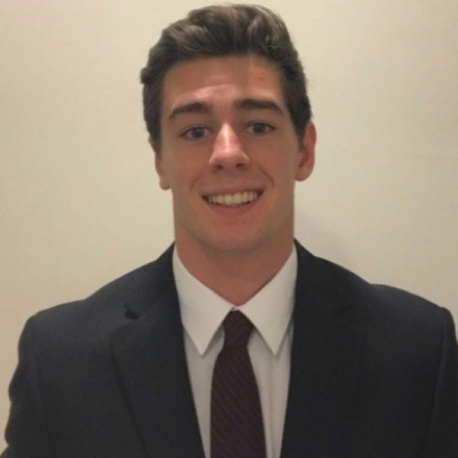“[T]he district court did not construe the claims, did not apply the protocols of intrinsic and extrinsic evidence, and did not resolve the meaning and scope of any challenged claims. [Instead, t]he district court applied an incorrect standard of ‘unanswered questions’ and a flawed analysis of validity.” – CAFC
 On January 27, the United States Court of Appeals for the Federal Circuit (CAFC) reversed the decision of the United States District Court for the Northern District of California to invalidate claims in two related patents, holding that the district court used the incorrect legal standard for indefiniteness.
On January 27, the United States Court of Appeals for the Federal Circuit (CAFC) reversed the decision of the United States District Court for the Northern District of California to invalidate claims in two related patents, holding that the district court used the incorrect legal standard for indefiniteness.
Nature Simulation Systems, Inc. (NSS) is the owner of United States Patents No. 10,120,961 (the ‘961 patent) and No. 10,109,105 (the ‘105 patent). Both patents relate to computer-implemented methods for building three-dimensional objects employing a computation method called “Boolean operation.” NSS brought an infringement action against Autodesk, Inc. in district court alleging infringement of claims 1 and 8 of the ‘961 patent and claim 1 of the ‘105 patent. The patents at issue are purported to improve upon two known methods. The district court summarized the prior art as follows: “There are two methods from prior art that are cited in the patents. The Delaunay method is a known method of triangulation…, and the Watson method is a known algorithm for computing a Deluany triangulation that is described in a paper written in 1981 by D.F. Watson.” In response to the infringement allegations, the district court held a Markman hearing to rule on claim construction and found the allegedly infringed claims invalid under 35 U.S.C. §112(b). NSS appealed this decision.
An Incorrect Standard
On appeal, NSS argued that the district court applied the incorrect legal standard for determining indefiniteness and therefore came to an improper conclusion about the validity of the claims at issue. Citing Markman, the CAFC noted that “[c]laim construction is a question of law, and receives de novo review on appeal. Markman v. Westview Instruments, Inc., 517 U.S. 370, 390–91 (1996). Additionally, pointing to Personalized Media, the CAFC noted at the outset that “[c]laim indefiniteness is decided from the viewpoint of persons skilled in the field of invention.” Personalized Media Communications, LLC v. Int’l Trade Com’n, 161 F.3d 696, 705 (Fed. Cir. 1998). To comply with 35 U.S.C. §112, patent claims must provide reasonable certainty in defining what is patented, the CAFC explained. Specifically, the court expounded, “Section 112(a) provides that the specification must describe the invention in full, clear, concise, and exact terms to enable its practice by any person skilled in the field of invention, and must include the best mode known to the inventor,” and “Section 112(b) requires that the specification conclude with claims that state the subject matter that is patented.”
The CAFC went on to cite case law that guides their interpretation of patent claims in view of the Section 112 requirements. Citing Nautilus, the CAFC reasoned that “claims are viewed and understood in the context of the specification and the prosecution history.” Nautilus, Inc. v. Biosig Instruments, Inc., 572 U.S. 898, 909 (2014). When litigants dispute a claim’s scope or meaning, the CAFC explained, citing Phillips, “the court looks first to the intrinsic record of the patent document, including ‘the words of the claims themselves, the remainder of the specification, the prosecution history, and extrinsic evidence concerning relevant scientific principles, the meaning of technical terms, and the state of the art.” Phillips v. AWH Corp., 415 F.3d 1303, 1314 (Fed. Cir. 2015) (en banc). The CAFC found that the district court did not follow the legal framework articulated by this precedent. The CAFC stated “the district court did not construe the claims, did not apply the protocols of intrinsic and extrinsic evidence, and did not resolve the meaning and scope of any challenged claims. [Instead, t]he district court applied an incorrect standard of “unanswered questions” and a flawed analysis of validity.”
Unanswered Questions
The district court held the claims at issue indefinite based upon the “unanswered questions” articulated by Autodesk’s expert, Aliaga. The answers to these questions were not in the claim terms, which the lower court believed was required for Section 112 to be satisfied. For the disputed claim term “searching neighboring triangles of the last triangle pair that holds the last intersection point,” the district court found three unanswered questions. Namely: (1) whether the phrase requires searching repeatedly or iteratively or merely once; (2) what the “last triangle pair” or “last intersection point” is; and (3) how can one “extend an intersection line” when in some cases it is not possible, as Aliaga demonstrated? Additionally, for the term “modified Watson method,” the district court pointed to four unanswered questions raised by Aliaga: (1) what is a neighboring point of intersection; (2) what is the meaning of an ‘identical point’ of intersection; (3) what the meaning of is removing a point of intersection; and (4) from what is the point of intersection being removed?
In response, NSS argued that each of these questions is answered in the specification. However, the district court held that definiteness requires the questions to be answered by “the claim language, standing alone.” The CAFC rebuffed the district court’s characterization of the legal standard, noting “claim language, standing alone” is not the correct standard of law and is contrary to uniform precedent.” The CAFC went on to explain that the district court “misperceived the function of patent claims,” the function “is not to duplicate the specification.” Citing In re Vamco, the CAFC explained that “the function of claims is (a) to point out what the invention is in such a way as to distinguish it from the prior what was previously known…and (b) to define the scope of protection afforded by the patent.” In re Vamco Mach. & Tool, Inc., 752 F.2d 1564 (Fed. Cir. 1985).
Prosecution History
With a corrected view of the purpose of the claims, the CAFC interpreted the claims at issue in light of the specification and prosecution history in accordance with the framework articulated in Nautillus and Phillips. The CAFC found that the prosecution history was significant because the patent examiner initially rejected the claims as indefinite and “required the applicant to provide additional definition in the claim clauses here at issue.” However, the district court gave no weight to the prosecution history showing the resolution of indefiniteness by adding new claim limitations. The CAFC found this to be an error, noting that “PTO examiners are entitled to appropriate deference.” When the claims were viewed in light of all intrinsic and extrinsic evidence, the CAFC found indefiniteness under 35 U.S.C. §112 was not established as a matter of law. Accordingly, the district court ruling was reversed.
Judge Dyk Dissents
Judge Dyk disagreed with the majority opinion’s conclusion that the asserted claims are valid, arguing that “[t]he fact that a patent examiner introduced the indefinite language does not absolve the claims from the requirements of 35 U.S.C. §112.”
Judge Dyk noted that the field of art here, computer-aided design is “unusually complex.” The patents, as Judge Dyk characterized them, “purport to improve two established methods of computer-aided design: constructive geometry, which combines simple objects using Boolean operations (e.g., intersection, combination, exclusion) to build complex objects, and boundary representation, which represents three-dimensional objects by defining their surfaces as meshes of two-dimensional objects.”
The indefiniteness issue is centered around the language describing “the modified Watson method” present in both the ‘105 patent and the ‘961 patent which the majority found support for in Figures 12 and 13 of the patents at issue. The problem that Judge Dyk identified with the Majority’s definition of “the modified Watson method” is that it ignored the claim language. As the district court found, and NSS conceded, claim 1 of the patents at issue adds limitations not found in Figures 12 or 13. Judge Dyk argued that the majority did not address this issue, but rather side-stepped it by relying on the fact that these unsupported limitations were suggested by the patent examiner. To underscore his position, Judge Dyk argued, citing Nautilus, that “the test for definiteness is whether the claims ‘inform those skilled in the art about the scope of the invention with reasonable certainty,’ not whether the claim language was added by a patent examiner or was not indefinite to the patent examiner.” Nautilus, 572 U.S. at 910.
Image Source: Deposit Photos
Image ID:33813075
Copyright:Skovoroda

![[IPWatchdog Logo]](https://ipwatchdog.com/wp-content/themes/IPWatchdog%20-%202023/assets/images/temp/logo-small@2x.png)

![[Advertisement]](https://ipwatchdog.com/wp-content/uploads/2024/04/Patent-Litigation-Masters-2024-sidebar-early-bird-ends-Apr-21-last-chance-700x500-1.jpg)

![[Advertisement]](https://ipwatchdog.com/wp-content/uploads/2021/12/WEBINAR-336-x-280-px.png)
![[Advertisement]](https://ipwatchdog.com/wp-content/uploads/2021/12/2021-Patent-Practice-on-Demand-recorded-Feb-2021-336-x-280.jpg)
![[Advertisement]](https://ipwatchdog.com/wp-content/uploads/2021/12/Ad-4-The-Invent-Patent-System™.png)







Join the Discussion
2 comments so far.
Frank
February 6, 2022 12:37 pmNice summary of the case and issues.
B
February 2, 2022 05:32 pmI got to “United States District Court for the Northern District of California” to come to a bias and unfair (yet totally 100% correct) assessment that the lower court made a bumbleheaded decision.
BTW, is it me or do the claims in this case look all abstract-y